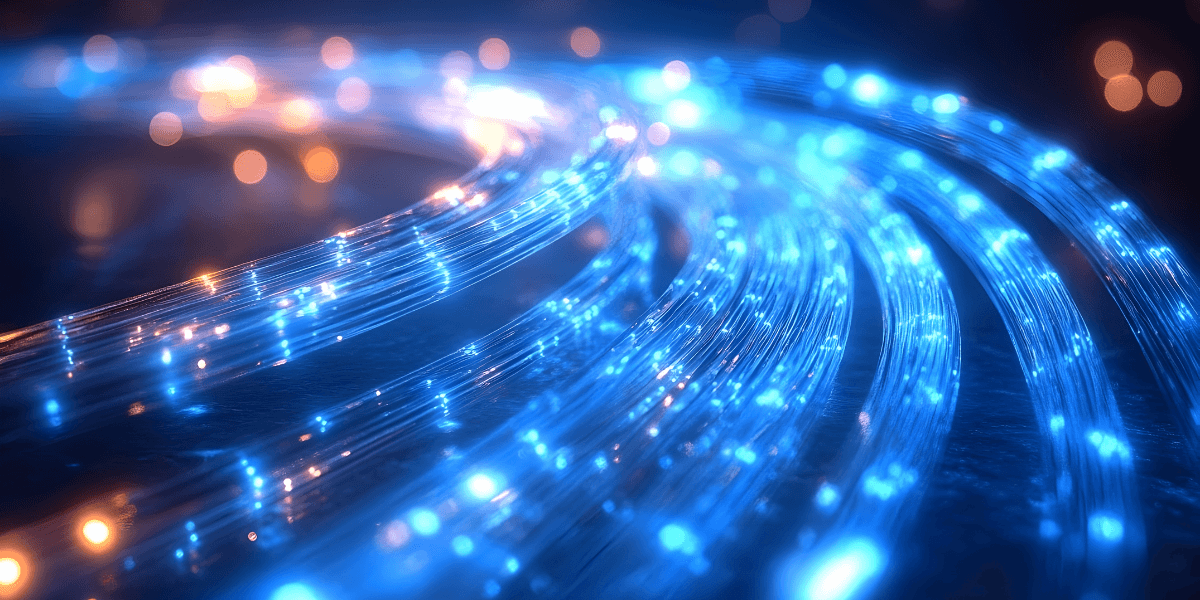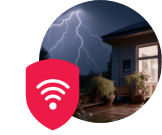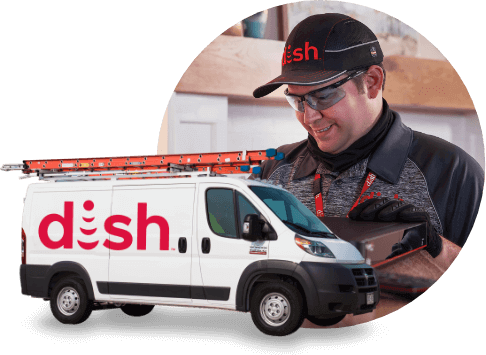How is Fiber Internet Installed?
Table of Contents
Imagine downloading your favorite 4K movie in seconds, not hours. Picture seamless video calls without freezing or buffering. Envision a household where everyone streams, games, and works online simultaneously—without a single complaint about slow internet. This is the reality of fiber internet. Fiber-optic technology delivers fast speeds that transform how we experience the online world. So, are you ready to leave internet frustration behind? Let’s explore how fiber internet is installed to bring high-speed internet from the street to your living room.
What Makes Fiber Internet Different?
Before diving into the installation details, let’s clarify what differentiates fiber from traditional internet services.
Unlike DSL and cable internet, which rely on copper wires to transmit electrical signals, fiber-optic internet uses thin strands of glass or plastic to carry data as light pulses. This fundamental difference delivers several key advantages:
- Superior speed: Fiber can reach speeds up to 5 Gbps (5,000 Mbps), far exceeding cable or DSL capabilities
- Reliability: Less susceptible to weather-related outages and signal interference
- Symmetrical speeds: Upload speeds match download speeds, unlike cable internet
- Futureproofing: Virtually unlimited capacity for bandwidth increases as technology advances
These benefits explain why many homeowners eagerly await fiber availability in their neighborhoods.

Check fiber availability
Is Fiber Internet Available at Your Address?
The first step in your fiber journey is determining whether service is available where you live. While fiber coverage continues to expand rapidly across the country, it hasn’t reached every neighborhood yet.
How to Check Fiber Availability
Simply enter your zip code here to determine if fiber has reached your area.
If fiber isn’t available yet, many providers let you register for notifications when construction reaches your neighborhood.
Why Isn’t Fiber Available Everywhere?
Installing fiber networks requires significant infrastructure investment. Each mile of fiber installation can cost tens of thousands of dollars, involving:
- Digging trenches for underground cable placement
- Obtaining permits from local governments
- Building neighborhood distribution hubs
Urban areas typically get fiber first because providers can connect more customers per mile of cable installed, making the investment more economical. Due to these economic realities, rural fiber expansion continues to grow but at a slower pace.
I’ll update the installation process section with this new information to make it more detailed and comprehensive.

So, How is Fiber Internet Installed?
Bringing fiber internet to your home involves a comprehensive process that begins long before a technician arrives at your door. Here’s the complete journey from network design to your first high-speed connection:
1. Preliminary Site Survey
Before any construction begins, providers conduct detailed site surveys of your neighborhood and property to:
- Assess the terrain and existing infrastructure
- Determine whether aerial (pole-based) or underground installation is appropriate
- Identify potential challenges or obstacles
- Create a personalized assessment of each property’s connection points
This hands-on approach ensures the installation plan fits your specific location and needs, setting the stage for all subsequent steps.
2. Network Design
With survey data in hand, engineers develop a comprehensive network design that includes:
- Path planning: Mapping the most efficient routes for fiber cables
- Sizing: Determining appropriate cable capacity for current and future needs
- Connection point identification: Strategically placing network hubs for optimal performance
This crucial design phase can take 6-12 months to complete, depending on the size and complexity of the connected area.
3. Pole Licensing and Material Ordering
Before construction begins, providers must:
- Secure licenses to attach fiber cables to existing utility poles (for aerial installations)
- Negotiate rights with pole owners, including power and telephone companies
- Order specialized materials, including fiber optic cables and connection hardware
- Ensure compliance with all local regulations
4. Make-Ready Work
This labor-intensive phase prepares utility poles for new fiber lines:
- Evaluating existing poles for capacity and structural integrity
- Adjusting positions of existing lines (electricity, telephone, cable) to make room
- Sometimes, replacing poles that cannot safely support additional lines
- Coordinating with multiple utility companies
This preparation can represent up to 40% of a project’s budget but is essential for a safe, reliable installation [1].
5. Strand Installation
For aerial installations, technicians install steel support cables:
- Working from bucket trucks, crews drill holes in utility poles
- Steel strands are anchored firmly to each pole
- These strands create the backbone that will support the actual fiber cables
- The steel provides crucial strength against environmental challenges like wind and ice
6. Lashing Fiber Cable
With support strands in place, crews attach the actual fiber optic cables:
- Using specialized tools called cable lashers, technicians bind fiber cables to steel strands
- The lasher wraps wire around both the fiber cable and steel strand, creating a secure bond
- This process moves systematically from pole to pole across the network
- Proper lashing ensures cables remain elevated and protected from physical damage
7. Adding Splice and Connection Points
The network infrastructure includes critical components for maintenance and flexibility:
- Splice cases: Protective enclosures where sections of fiber cable connect
- Slack loops: Extra lengths of cable strategically placed throughout the network
These elements allow for future repairs, maintenance, and network expansion without significant reconstruction.
8. Splicing Fiber Segments
Technicians perform the delicate work of joining fiber strands:
- Using fusion splicing, fiber ends are precisely aligned and melted together with an electric arc
- Each splice is inspected with specialized microscopes to ensure perfect alignment
- Heat-shrink tubes or protective gel shield splices from environmental damage
- Quality splices minimize signal loss, ensuring maximum network performance
9. Engaging Potential Customers
As network construction progresses, providers begin outreach to potential customers through:
- Community events and informational sessions
- Digital marketing campaigns and local advertising
- Direct mail with service details and pricing
- Social media updates on construction progress
10. Installing Drop Cables
When you sign up for service, the provider connects your home to the main network:
- A smaller, flexible fiber cable runs from the main line to your house
- Installation may be aerial (from pole to house) or underground
- The drop cable connects to an external enclosure on your home’s exterior
- This becomes the transition point between outdoor and indoor connections
11. Installing Electronics and Activating Service
The final step brings your fiber connection to life:
- Technicians install an Optical Network Terminal (ONT) at your home
- This device converts light signals from the fiber into electrical signals your devices can use
- The ONT connects to your router via an Ethernet cable
- Technicians configure your network settings and activate the service
- Speed tests verify you’re receiving your promised connection speeds
After completing these steps, you’ll enjoy all the benefits of your new fiber internet connection, with speeds and reliability far beyond traditional services.

How Deep Are Fiber Optic Cables Buried?
For underground installations, the depth of fiber cables varies by location:
- Urban areas: Cables typically rest 12-24 inches (30-60 cm) below the surface
- Rural areas: Deeper placement at 24-36 inches (60-90 cm) provides extra protection
These depths prevent accidental damage from routine yard maintenance while keeping cables safe from freezing and other natural hazards.
Equipment Needed for Fiber Internet
Unlike cable service, fiber internet requires specific equipment:
Optical Network Terminal (ONT)
This device:
- Converts light signals to electrical signals
- Acts as the demarcation point between the provider’s network and your home
- Usually belongs to the service provider
- Requires electrical power to function
Router
You’ll need a router that can:
- Handle gigabit-plus speeds
- Offer WiFi 6 capabilities for optimal wireless performance
- Connect to the ONT via an Ethernet cable
Many providers offer router rental or purchase options specifically designed for their fiber service.
Ethernet Cables
High-quality Ethernet cables connect:
- The ONT to your router
- Your router to any devices requiring wired connections
For best performance, use Cat5e or higher cables capable of gigabit speeds.

Streamlined connections
Do You Need a Modem for Fiber Internet?
This question causes frequent confusion. The simple answer: No, you don’t need a separate modem for fiber internet.
With cable or DSL service, a modem converts signals from the provider’s network into a format your router can use. With fiber internet, the ONT handles this conversion, essentially replacing the modem in your setup.
Your connection flows:
- From the fiber network to the ONT
- From the ONT to your router via Ethernet
- From your router to your devices via WiFi or Ethernet
This streamlined approach eliminates one device from your networking setup.
How Much Does Fiber Internet Installation Cost?
Installation costs vary significantly between providers:
Provider Costs
For internet companies, installing fiber networks represents a significant investment:
- Network construction costs up to $140 billion nationwide [2]
- Per-mile installation costs can reach tens of thousands of dollars
- Rural areas cost more to connect than urban neighborhoods
Consumer Costs
For homeowners, installation costs typically range from:
- Free: Many providers waive installation fees to attract new customers
- $50-$100: Standard installation fee for some providers
- $200+: Specialized installations requiring additional work
Always check with your provider about potential installation fees before signing up. Many offer promotional deals waiving these charges for new customers.

Varied installation timelines
How Long Does Fiber Installation Take?
The timeline for getting fiber installed varies:
- Standard home installation: 2-4 hours once the technician arrives
- Complex installations: May require multiple visits spanning several days
- Neighborhood deployment: Can take months from announcement to availability
Most providers schedule specific appointment windows and offer arrival notifications so you don’t wait an entire day.
Ready to Experience Fiber Internet?
Don’t wait another day struggling with slow, unreliable internet. The digital future is here, and it runs on fiber. Taking the first step toward lightning-fast connectivity is easier than you think.
Enter your zip code now to discover fiber availability in your neighborhood. If fiber has reached your area, you could be enjoying blazing speeds within days.
The internet shapes how we work, learn, connect, and entertain ourselves. Why settle for yesterday’s technology when the gold connectivity standard might be just a zip code check away?
Sources
[1] Race.com. “Fiber Optic Installation in 11 Steps: From Design to Activation"
[2] Naco.org. “Investing $100 Billion in American Infrastructure".







 Call
Call 

 Access Your Account
Access Your Account